Kiwi Winter Care: Care Of Hardy Kiwi Over Winter
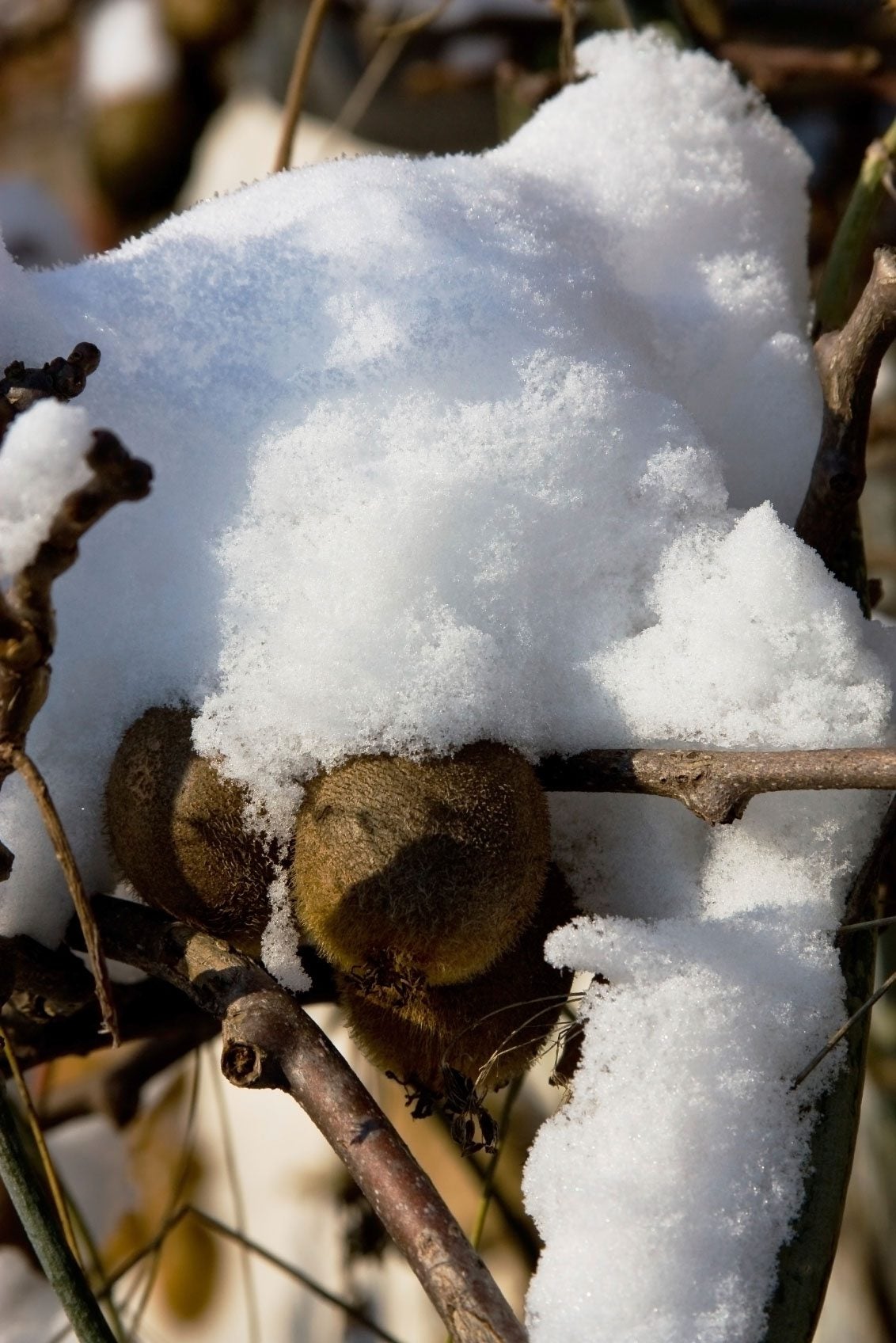
Once slightly exotic to many Americans, the kiwi has gained in popularity. The egg-sized, fuzzy-skinned fruit with the startlingly green flesh that we buy at the grocers is much too tender to be grown in most of the United States. Fear not, the hardy kiwi (Actinidia arguta and Actinidia kolomikta) is much more resilient in cold temps but, even so, may need special kiwi winter care. How do you go about winterizing hardy kiwi and does hardy kiwi require overwintering?
Kiwi Winter Care
Before we discuss winter care of hardy kiwi, a little information on the fruit is in order. Although related to the kiwis we purchase at the supermarket, the fruit of A. arguta and A. kolomikta are much smaller with smooth skin. Most varietals have male and female flowers born on different plants, thus you will need both a male and female, in a 1:6 ratio of males to females. Don't expect to be munching on the fruit immediately; these plants take several years to mature. The hardy vines also need a substantial trellis for support. The most popular variety of A. arguta is called ‘Ananasnaya' (also known as ‘Anna') and that of A. kolomikta, called ‘Arctic Beauty', both of which need a male and female to set fruit. A self-fertile variety called ‘Issai,'is also available, although this cultivar has low vine vigor and very small fruit.
Does Hardy Kiwi Require Overwintering?
The answer really depends on your region and how low temperatures get in your climate. A. arguta will survive at -25 degrees F. (-30 C.) but A. kolomikta will withstand temps down to -40 degrees F. (-40 C.). Both types develop shoots early and may be sensitive to frost, which does not usually kill the plants, but some tip burning will be evident. Spring frosts are of special concern, as the plant may have begun developing buds and young shoots. A subsequent frost will usually render a plant that does not produce fruit. The trunks of young plants are also more susceptible to injury during these spring frosts. Specific winter care of hardy kiwi is less likely for plants that are set in the ground. Those that are in containers are more susceptible and require care of hardy kiwi over winter. Either move the plant to over winter indoors or, if an unusual, short cold snap is expected, move the plant into a sheltered area, mulch around it and add cover to protect it. For young trees, be sure to wrap the trunk or cover with leaves. Using sprinklers and heaters in the garden proper will, of course, also aid in preventing cold injury to the kiwi. Start out by planting the kiwi in an area of well-draining loam with a pH of around 6.5 in rows 15-18 inches (38-46 cm.) apart. Areas protected from high winds will also ensure a healthy plant that is more cold hardy.
Gardening tips, videos, info and more delivered right to your inbox!
Sign up for the Gardening Know How newsletter today and receive a free copy of our e-book "How to Grow Delicious Tomatoes".

Amy Grant has been gardening for 30 years and writing for 15. A professional chef and caterer, Amy's area of expertise is culinary gardening.
-
 Looking For Plants To Give You The Soft And Fuzzies? Try These 5 Fuzzy Leaf Plant Options
Looking For Plants To Give You The Soft And Fuzzies? Try These 5 Fuzzy Leaf Plant OptionsLovers of texture, drama, silver foliage and tactile plants will adore these special sensory garden additions. These fuzzy leaf plant options will leave you all aglow
By Susan Albert
-
 Get Ready For A Summer Of Hummers! Grow These Full Sun Hummingbird Plants and Flowers
Get Ready For A Summer Of Hummers! Grow These Full Sun Hummingbird Plants and FlowersIf you’re lucky enough to enjoy a sunny backyard, make sure you are maxing out on your pollinator opportunities and grow these full sun hummingbird plants and flowers
By Tonya Barnett
-
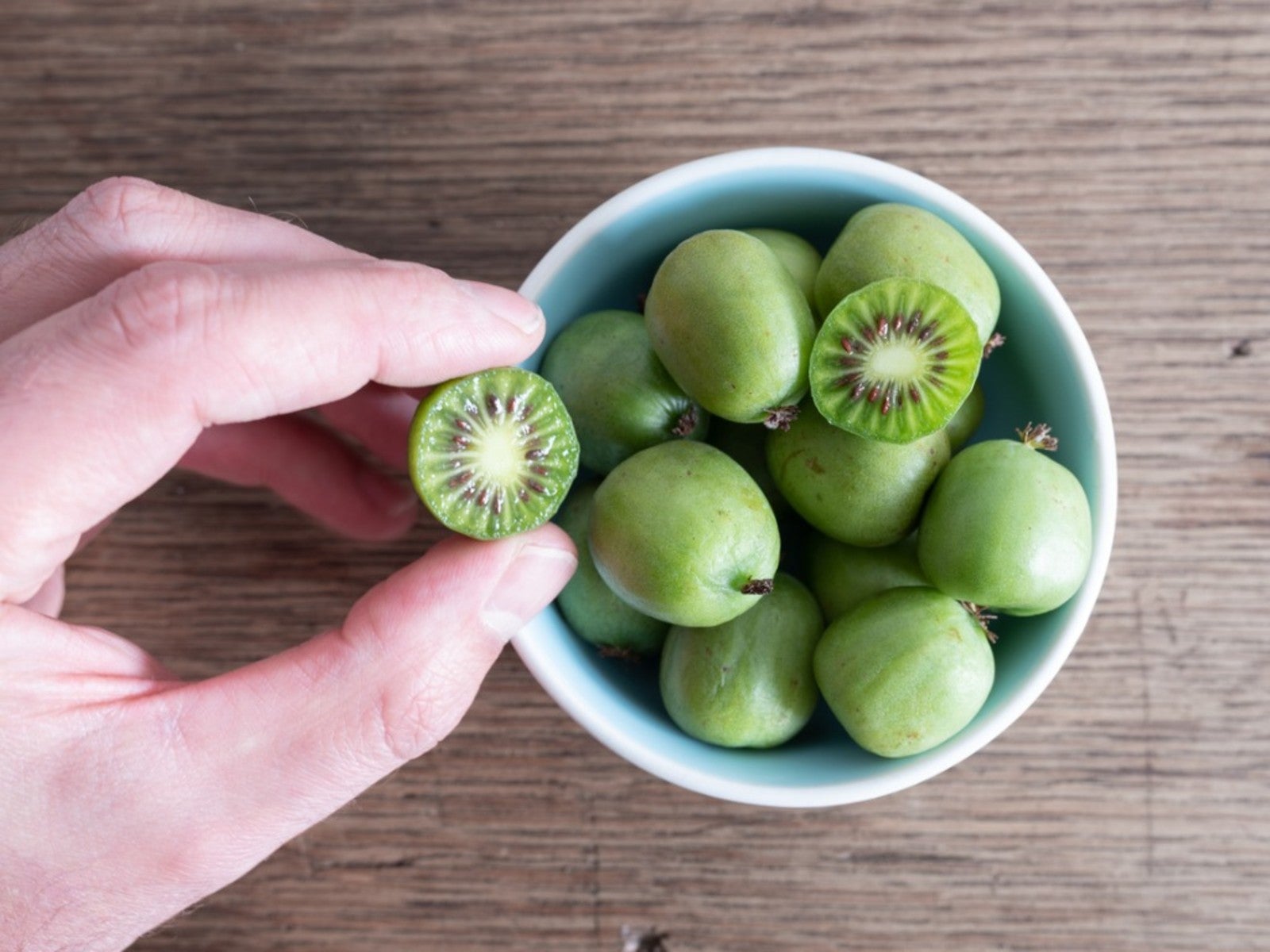 Kiwiberry Care Guide – Learn About Kiwiberry Growing Conditions
Kiwiberry Care Guide – Learn About Kiwiberry Growing ConditionsLove kiwis but wish they didn't have the fuzzy, gritty skin? Enter the kiwiberry. Read on for more info about these weird little fruits.
By Bonnie L. Grant
-
Caring For Kiwi: How To Grow Hardy Red Kiwi Fruit
Hardy Red kiwi produces grape-sized, fuzz-less fruit with an authentic kiwi flavor. For information on growing them, click the following article.
By Laura Miller
-
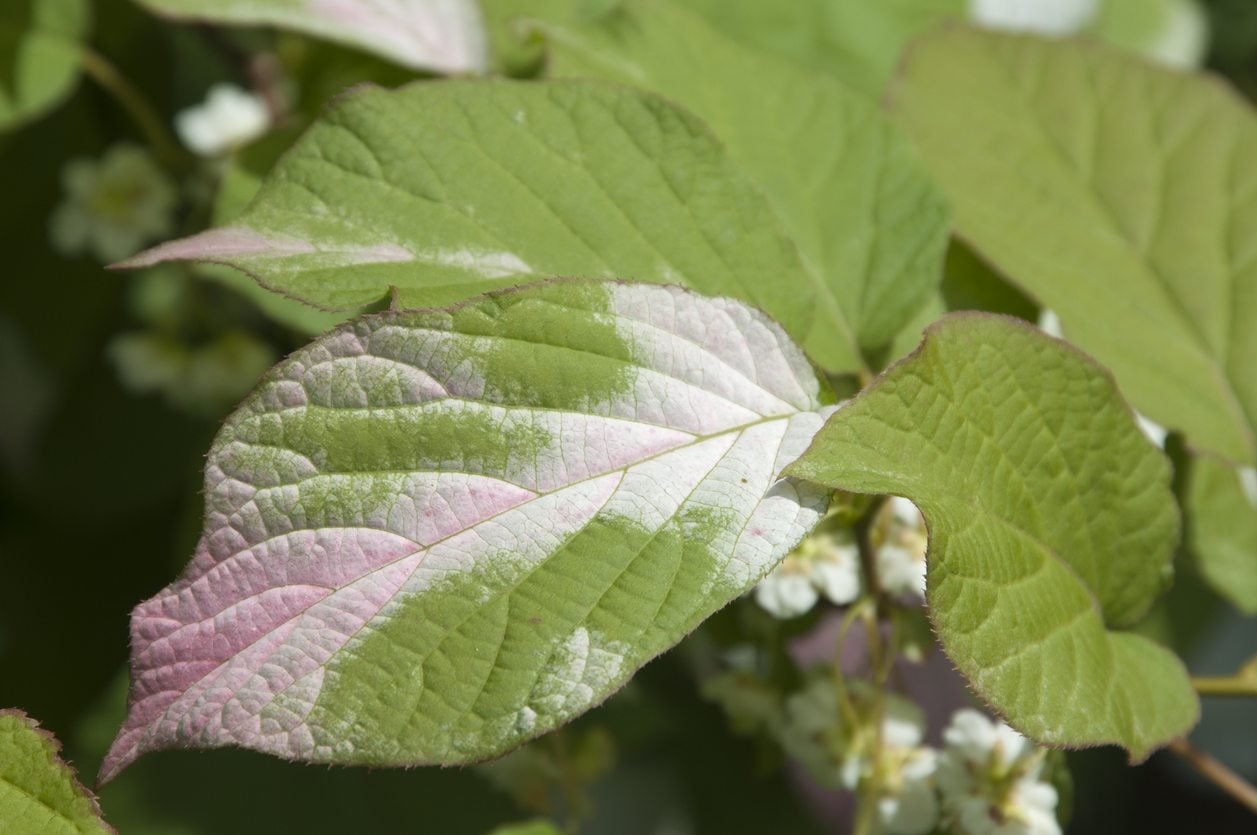 Tricolor Kiwi Information: How To Grow A Tricolor Kiwi Plant
Tricolor Kiwi Information: How To Grow A Tricolor Kiwi PlantActinidia kolomikta is a hardy kiwi vine that is commonly known as tricolor kiwi plant because of its variegated foliage. Also known as arctic kiwi, it is one of the hardiest of the kiwi vines. For tips on growing tricolor kiwi, click this article.
By Darcy Larum
-
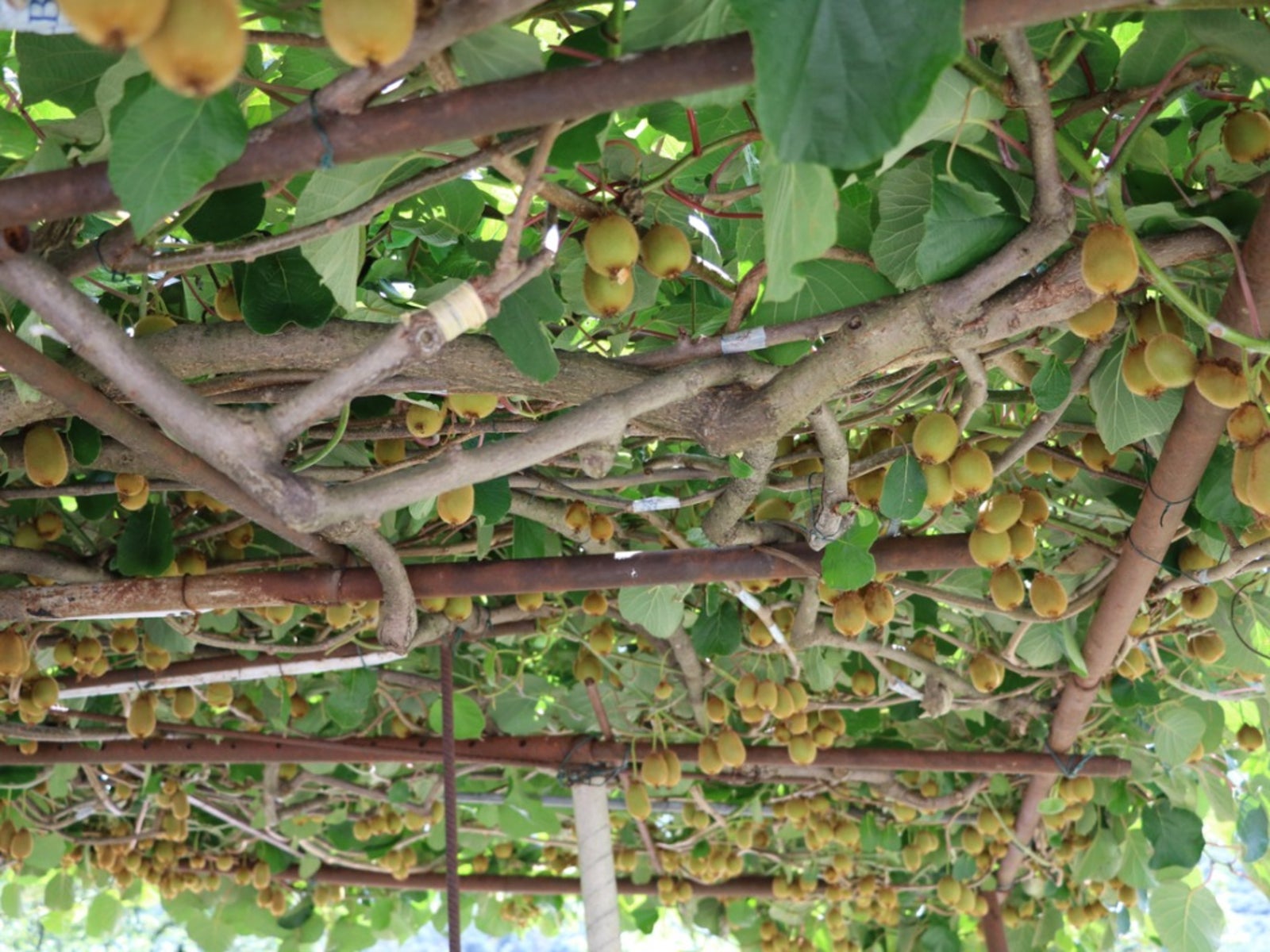 Kiwi Plant Trimming: Pruning Mature Kiwi Vines In The Garden
Kiwi Plant Trimming: Pruning Mature Kiwi Vines In The GardenRegular pruning is an essential part of caring for kiwi vines. Kiwi vines left to their own devices quickly become a tangled mess. But pruning overgrown kiwi vines is also possible if you follow simple trimming steps. This article will help.
By Teo Spengler
-
 Fruit Companion Planting: Companion Planting Around Kiwi Vines
Fruit Companion Planting: Companion Planting Around Kiwi VinesCompanions for kiwi can help the plants grow more vigorously and fruit more prolifically. Not every plant is an ideal kiwi companion plants, though. What plants make the most ideal kiwi plant companions? Click this article to learn more.
By Amy Grant
-
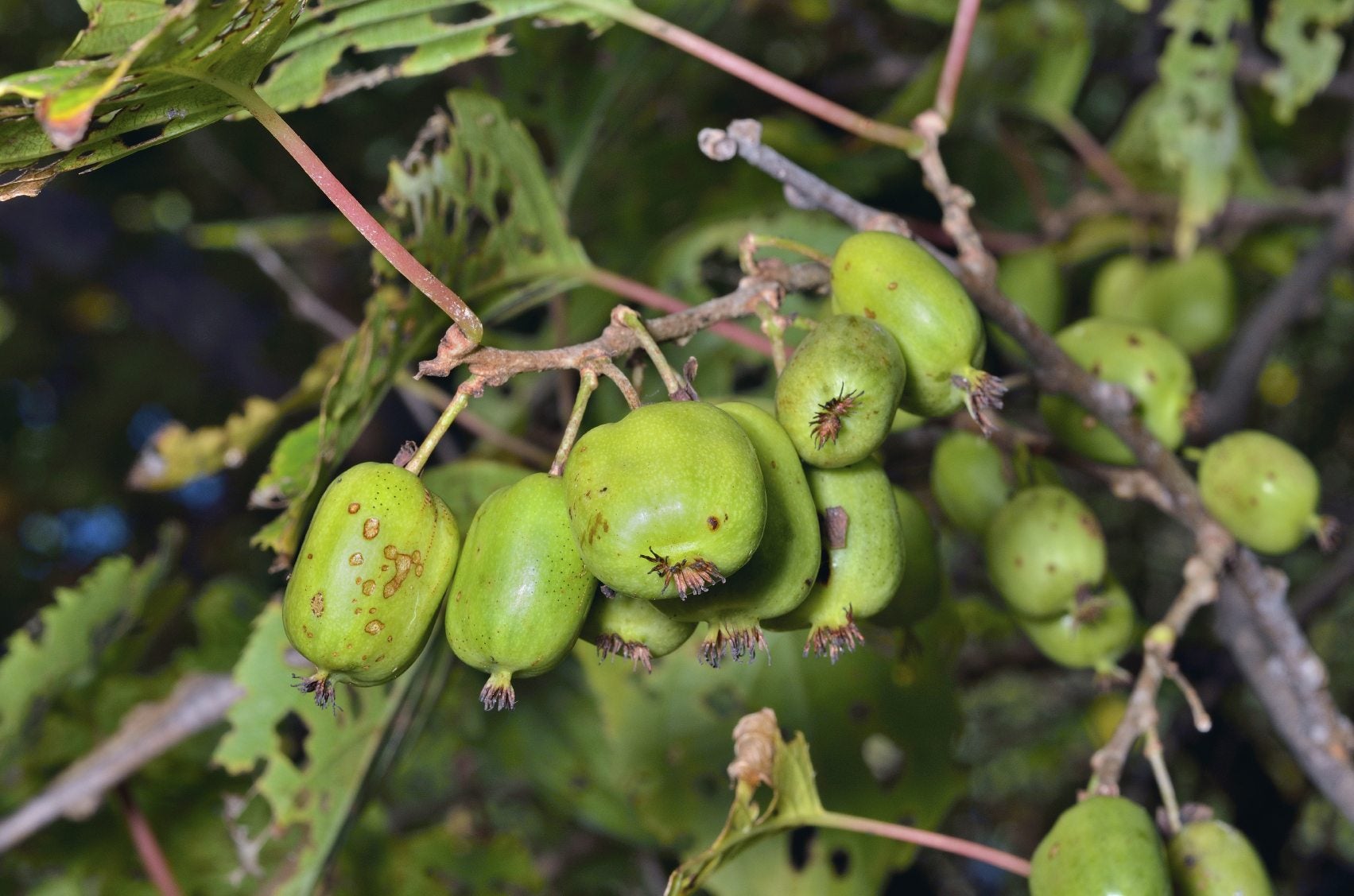 Hardy Kiwi Diseases: How To Treat A Sick Kiwi Plant
Hardy Kiwi Diseases: How To Treat A Sick Kiwi PlantWhile the kiwi plant is tough and relatively easy to grow, it can fall prey to various kiwi plant diseases. You can learn more about the diseases of kiwi and their treatment in this article. Click here for more information.
By Mary H. Dyer
-
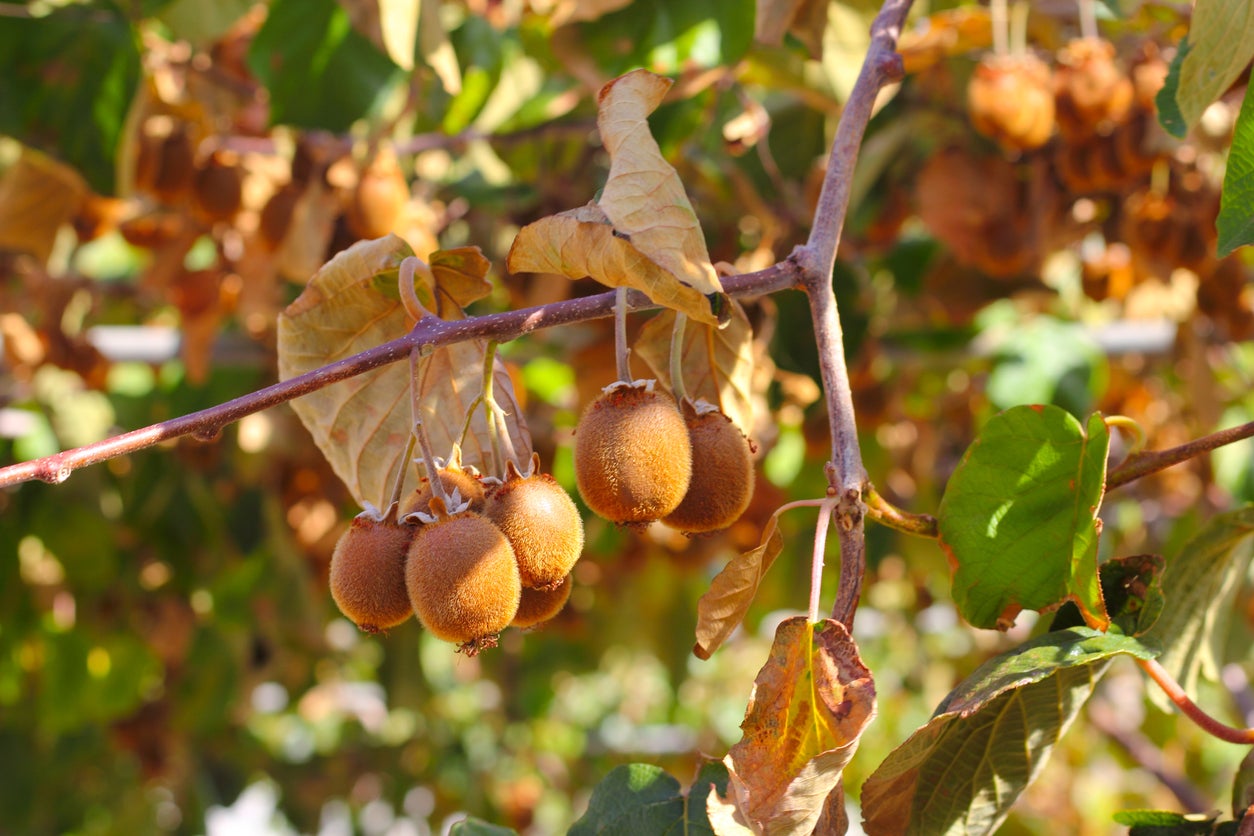 Kiwi Leaves Turn Brown – Reasons For Kiwi Vines Turning Yellow Or Brown
Kiwi Leaves Turn Brown – Reasons For Kiwi Vines Turning Yellow Or BrownHealthy kiwi leaves are a brilliant green during the growing season, and you might well become worried when your kiwi leaves turn brown or you see yellowing kiwi plants. Click this article for information about steps to take when you see kiwi leaves turning yellow.
By Teo Spengler
-
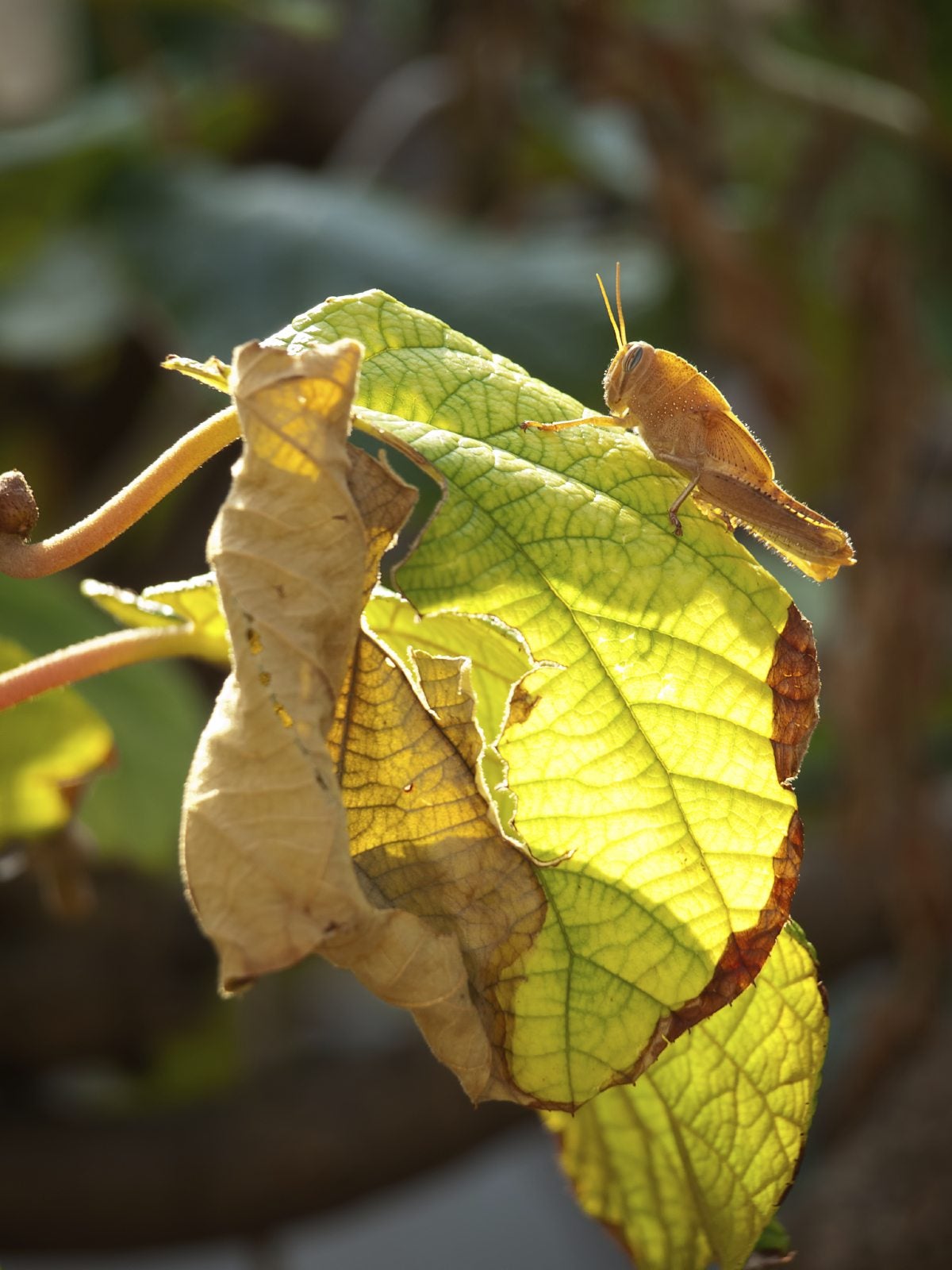 Pests Of Kiwi Vines: Information For Treating Kiwi Bugs
Pests Of Kiwi Vines: Information For Treating Kiwi BugsWhile kiwi plants are tough and relatively easy to grow, they can fall prey to various kiwi plant pests. Learn more about kiwi insects and tips for treating kiwi bugs in this article. Click here for additional information.
By Mary H. Dyer